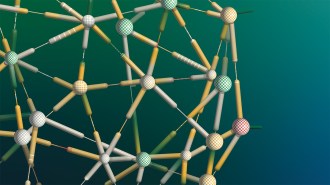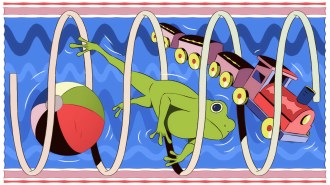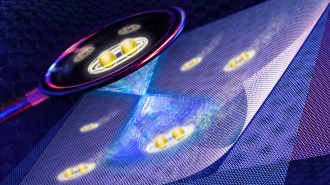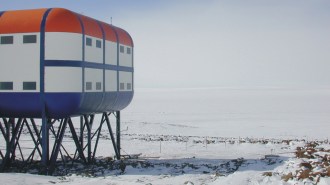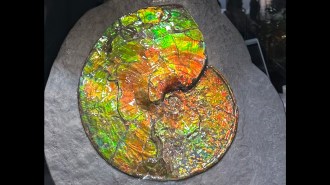- More than 2 years ago
A dash of sunlight, a sprinkle of light-harvesting proteins and a healthy dollop of carbon dioxide is about all it takes to whip up a batch of tasty plant food — but you might want some quantum physics to stir the pot. Scientists have caught photosynthetic lake-dwelling algae performing long-lasting quantum tricks at room temperature. The results, published February 4 in Nature, suggest that quantum mechanics may be at the heart of sunlight-to-energy conversion in living organisms.
“This is quantum mechanics in a biological system,” says study coauthor Gregory Scholes, a physical chemist at the University of Toronto.
Photosynthesis relies on special proteins that absorb incoming photons, or particles of light. These photons excite electrons in the protein, touching off a series of electron transfers that ultimately ferry the energy-laden electrons to centralized collection stations (called photosystems) where the conversion of energy to carbohydrates begins.
Under normal, everyday rules, electrons would make their way to their destinations with quick random hops. But recent studies of photosynthetic bacteria and plants suggest that the electrons might act more like correlated waves instead of hopping particles, a behavior predicted by quantum mechanics (SN: 5/9/09, p. 26). These studies have mainly seen such quantum effects at very low temperatures, where the system is held very still. Scholes and colleagues devised an experiment to see whether these quantum-mechanical wavelike properties were also present at normal temperatures.
The researchers purified the light-catching proteins from two types of photosynthetic algae called cryptophytes. At room temperature, the team shone a laser onto the proteins to excite them and used a second laser pulse to see where the excited electrons traveled. Patterns of long-lasting electron waves — a property called quantum coherence — indicated that quantum weirdness was at work.
“This study shows that quantum coherence is present at room temperature,” says Graham Fleming, a chemist at the University of California, Berkeley — a result predicted from his lab’s previous studies. “It is very likely a general feature of photosynthetic light harvesting complexes,” says Fleming, who pioneered some of the early studies on quantum effects in photosynthesis.
Just as jiggling water disrupts the wave pattern created by a pebble tossed into a pond, random motion from thermal energy of atoms destroys electrons’ coherent wave patterns. The researchers expected to see the coherence last for about 20 femtoseconds, Scholes says. Instead, it lasted for about 400 femtoseconds. This longevity, especially at room temperature, “is a really fantastic feature of these experiments,” Scholes says.
These long-lasting quantum effects may help explain the mystery of why the initial electron-moving reactions in photosynthesis are so efficient. In an extreme version of the algae’s quantum-mechanical trick, electrons could simultaneously take all the possible paths to a photosystem and decide after they arrived which route was best. “That vibrating electron could put some feelers out and see which path to take,” Scholes says.
The researchers don’t yet know for sure whether quantum effects are making the reaction chain more efficient. Scholes believes that they do, but more studies and modeling experiments will be required to say exactly how much of a boost quantum coherence provides.
“In my view, this long-lasting coherence may have a meaning for natural photosynthesis, in the sense that it may contribute to the effective harvesting of light energy, but this remains to be proven,” comments Rienk van Grondelle of VU University Amsterdam, who coauthored an accompanying article published in the same issue of Nature.

